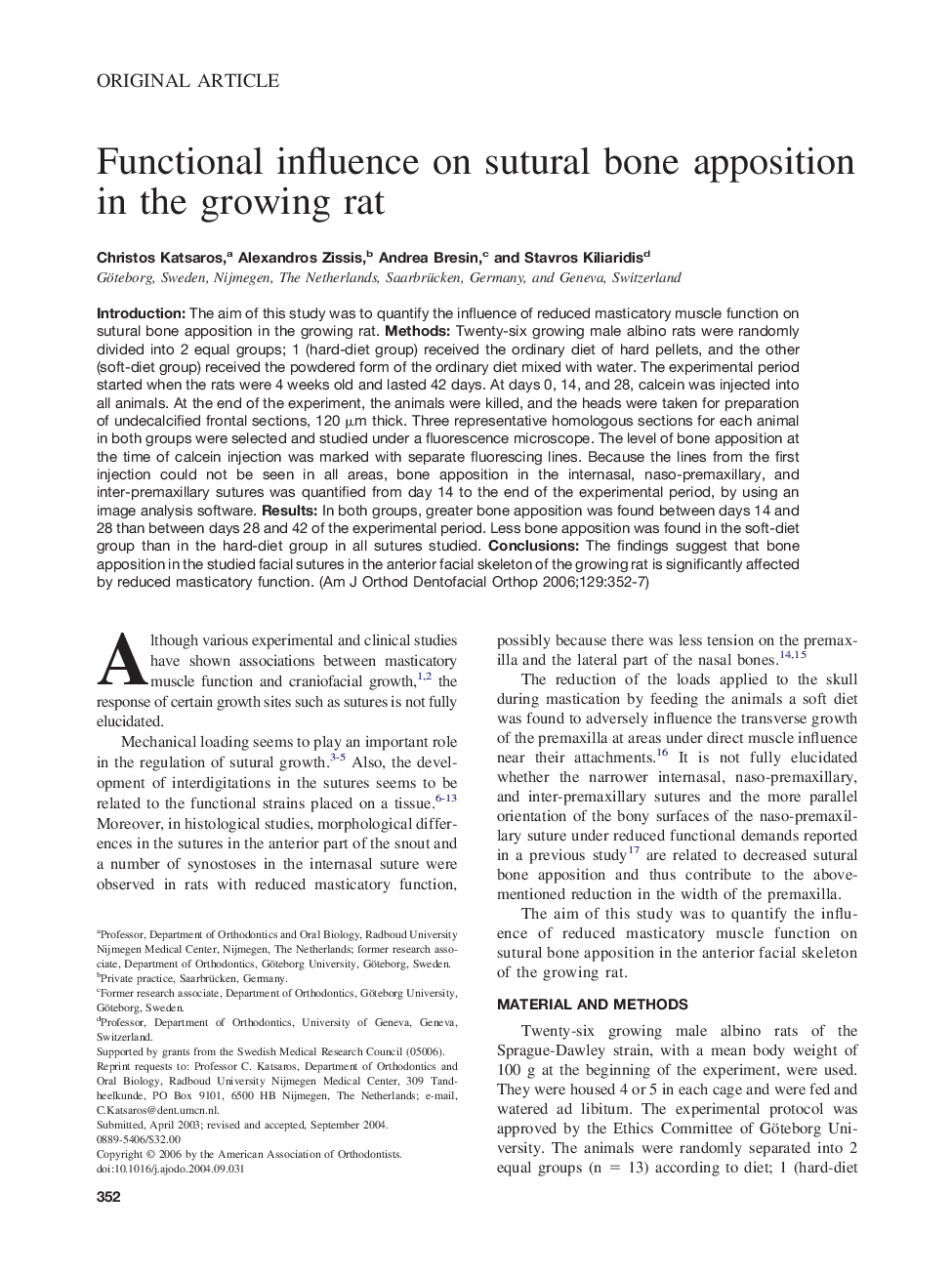| Article ID | Journal | Published Year | Pages | File Type |
|---|---|---|---|---|
| 3120110 | American Journal of Orthodontics and Dentofacial Orthopedics | 2006 | 6 Pages |
Abstract
Introduction: The aim of this study was to quantify the influence of reduced masticatory muscle function on sutural bone apposition in the growing rat. Methods: Twenty-six growing male albino rats were randomly divided into 2 equal groups; 1 (hard-diet group) received the ordinary diet of hard pellets, and the other (soft-diet group) received the powdered form of the ordinary diet mixed with water. The experimental period started when the rats were 4 weeks old and lasted 42 days. At days 0, 14, and 28, calcein was injected into all animals. At the end of the experiment, the animals were killed, and the heads were taken for preparation of undecalcified frontal sections, 120 μm thick. Three representative homologous sections for each animal in both groups were selected and studied under a fluorescence microscope. The level of bone apposition at the time of calcein injection was marked with separate fluorescing lines. Because the lines from the first injection could not be seen in all areas, bone apposition in the internasal, naso-premaxillary, and inter-premaxillary sutures was quantified from day 14 to the end of the experimental period, by using an image analysis software. Results: In both groups, greater bone apposition was found between days 14 and 28 than between days 28 and 42 of the experimental period. Less bone apposition was found in the soft-diet group than in the hard-diet group in all sutures studied. Conclusions: The findings suggest that bone apposition in the studied facial sutures in the anterior facial skeleton of the growing rat is significantly affected by reduced masticatory function.
Related Topics
Health Sciences
Medicine and Dentistry
Dentistry, Oral Surgery and Medicine
Authors
Christos Katsaros, Alexandros Zissis, Andrea Bresin, Stavros Kiliaridis,
